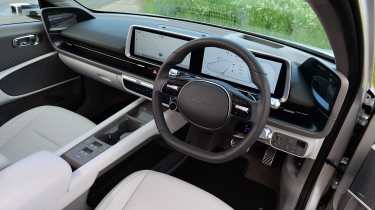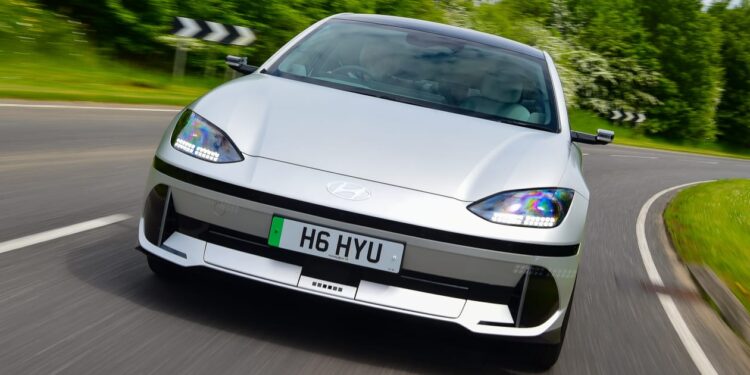- Eye-catching looks
- Good range
- £247.98 a month
There aren’t many family saloons out there that will match the Hyundai Ioniq 6 for its head-turning ability, but as with the Ioniq 5 which it sits alongside, it manages to combine great looks, driveability, efficiency and technology. And thanks to this deal we found on the Auto Express Find A Car service via Carparison, you can now add value into the mix, too.
Based on a two-year agreement, this deal requires an initial deposit of £3,274 followed by monthly payments of just £247.98. There’s a maximum mileage limit of 5,000, but you can extend this to 8,000, which would increase the monthly payments to £266.
Sitting on the same platform and using the same 77kWh battery as the Ioniq 5, the Ioniq 6 comes with some very impressive numbers. Range stands at a respectable 339 miles and thanks to its 800V architecture, a 350kW ultra-rapid charger would see a 10 to 80 per cent top-up in just 18 minutes.
Then there’s the design: the Ioniq 6 demands attention whether you’re looking from the inside or out. While it might resemble something from a sci-fi film, it’s easy to drive thanks to light steering and a quiet cabin. It’s quick, too – a 228bhp electric motor is enough to punch it from 0-62mph in 7.4 seconds.
Equipment levels are excellent. The all-important heat pump is present and accounted for, there’s dual-zone climate control, a vehicle-to-load charging capacity, twin 12.3-inch screens, a wireless smartphone charger and a heated steering wheel to go with heated front and rear seats.

The Car Deal of the Day selections we make are taken from our own Auto Express Find A Car deals service, which includes the best current offers from car dealers and leasing companies around the UK. Terms and conditions apply, while prices and offers are subject to change and limited availability. If this deal expires, you can find more top Hyundai Ioniq 6 leasing offers from leading providers on our Hyundai Ioniq 6 hub page.
Check out the Hyundai Ioniq 6 deal or take a look at our previous Car Deal of the Day selection here…


